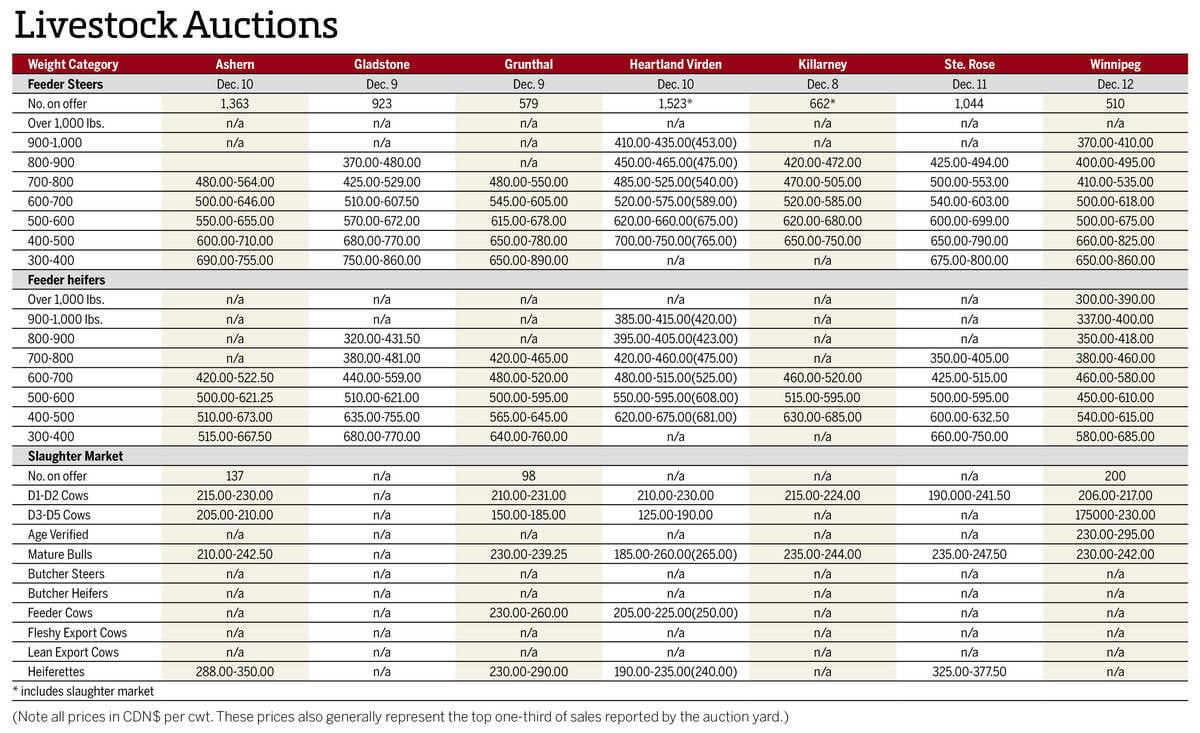United States President Donald Trump repeated his plans on Jan. 30 to impose 25 per cent tariffs on Canadian and Mexican goods imported into the U.S. at the start of February. The reasons cited were a supposed trade deficit with Canada and allegedly a large amount of drugs entering the U.S. from Canada.
Then it was Feb. 4 that they would take effect. Then, at the 11th hour, they were delayed until March.
Of course, one of those goods affected by the tariffs would be Canadian canola, effectively strangling trade between Canada and the largest buyer of Canadian canola oil. In 2023, Canada exported C$8.6 billion worth of canola products to the U.S., according to Statistics Canada. The potential effects to canola prices at the Intercontinental Exchange, and to the Canada’s canola industry, would be calamitous.
Read Also

Manitoba cattle prices Dec. 16
Here’s what local farmers were getting paid last week for their cattle at Manitoba livestock auction marts; prices covering the week Dec. 8-12, 2025.
But what if these tariffs were to be short-lived, or never happen?
A Trump administration, former or current, can be unpredictable. Commerce secretary nominee Howard Lutnick said at a hearing on Jan. 29 that Canada was “acting swiftly” to improve its border and “there would be no tariff” if successful. The Wall Street Journal reported on Jan. 30 Trump’s aides were trying to persuade the president to pursue other options.
Over the last week of January, canola saw choppy trading while holding rangebound, indicating a lack of concern for the potential tariffs. If it’s business as usual, prices for the oilseed would be pulled in both directions.
The rapid export pace earlier in the marketing year, especially to China, and a potentially large crush could result in price rationing sooner than later. Weather concerns over the past few weeks in Brazil and Argentina tightened production estimates for the still-to-be record-breaking South American crop. Chicago soyoil, which canola typically follows, saw its March contract trade two U.S. cents per pound above its moving averages. The potential for hotter temperatures in India next month could decimate that country’s rapeseed crop.
However, China’s buying could come to a halt if the country prohibits imports after the conclusion of an anti-dumping investigation into Canada. The South American soybean harvest, slow so far, could start to accelerate sooner than later, putting more oilseeds into the market.
As the calendar turns to February, no one knows exactly how canola prices will turn out, tariffs or otherwise.















